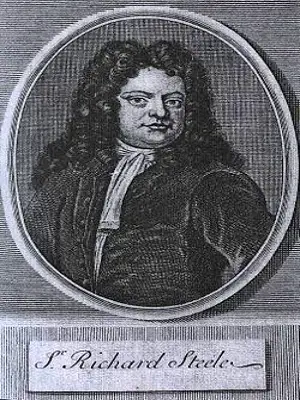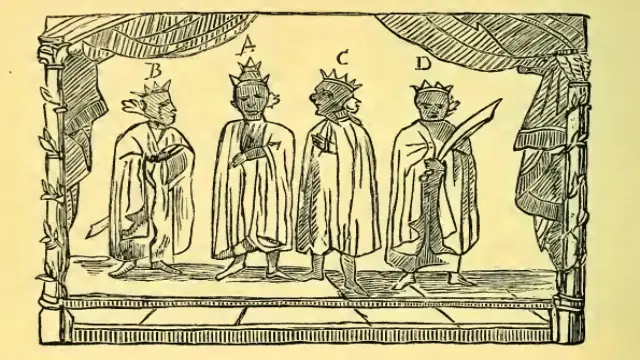In the early 1700s, London was a city of contrasts. While Queen Anne sought to showcase her kingdom’s magnificence by inviting Native American leaders—the “Four Indian Kings”—to marvel at Buckingham Palace, the streets were plagued by lawlessness. Among the most infamous groups terrorizing the capital were the Mohocks, a gang whose brutal antics shocked even hardened Londoners.
Who Were the Mohocks?
The Mohocks emerged in 1712 as one of London’s most feared street gangs. Their name struck fear into the hearts of citizens, and their crimes were both violent and bizarre. Unlike earlier gangs like the Scowerers or Hectors, who caused trouble but rarely escalated to extreme violence, the Mohocks took savagery to new levels.
Their victims included men, women, children, and even elderly people. The gang targeted anyone unlucky enough to cross their path. They committed acts such as slashing faces, gouging eyes, and mutilating bodies—all for sport. These horrors earned them widespread notoriety during their brief but terrifying reign.
The Crimes of the Mohocks
The Mohocks didn’t just attack randomly; they had specific methods that added to their infamy. Here are some of their most shocking tactics:
- “Tipping the Lion”: This involved flattening a victim’s nose against their face and gouging out their eyes with fingers.
- “Tumbling”: Women were turned upside down and assaulted in public.
- “Dancing Masters”: Victims were surrounded and stabbed repeatedly in the legs with swords.
- Barrel Rolling: An old woman was reportedly placed inside a barrel and rolled down Snow Hill.
- Fish-Hook Torture: Hooks were pushed through cheeks, and victims were dragged around like animals on a leash.
Even carriages weren’t safe. The Mohocks would overturn coaches and dump passengers into rubbish heaps. No one—rich or poor—was spared from their wrath.
Public Reaction and Panic
The rise of the Mohocks sent shockwaves through London society. Letters from prominent figures like Lady Stafford described scenes of chaos and brutality. She wrote about noses being cut off, hands severed, and other “barbarous tricks” carried out without provocation.

Writers of the time also weighed in. Richard Steele, editor of The Spectator, condemned the gang’s drunken rampages. He noted how they attacked indiscriminately, leaving victims “stabbed, slashed, and carbonadoed.” Even Daniel Defoe, author of Robinson Crusoe, expressed disbelief at their cruelty, calling it unprecedented in modern history.
Famous satirist Jonathan Swift, best known for Gulliver’s Travels, lived in constant fear of becoming a target. In letters to his friend Stella, he mentioned hearing rumors that the Mohocks planned to attack him. Swift went so far as to travel home in a chair instead of walking alone after dark.
Were the Mohocks Real—or Just Urban Legends?
Despite the widespread panic, some questioned whether the Mohocks actually existed. Critics argued that tales of their atrocities might have been exaggerated or fabricated entirely. One theory suggested that stories of the Mohocks were invented by husbands and fathers to scare wives and daughters into staying indoors at night—a tactic akin to warning children about mythical monsters under the bed.
Others believed the reports served political purposes. Some accused Whig supporters of orchestrating fake attacks to undermine confidence in Queen Anne’s government. A satirical ballad of the time accused the Whigs of using the Mohocks to destabilize the monarchy and create unrest.
The End of the Mohocks
By mid-1712, the Mohocks’ reign of terror came to an abrupt end. Whether due to increased vigilance, public backlash, or simple disbandment remains unclear. However, several high-profile arrests shed light on the gang’s activities.
One notable case involved John Bouch, a watchman beaten by eight men in Essex Street. Though three attackers fled, five were captured—including Sir Mark Cole, a baronet, and Captain John Reading. Shockingly, these wealthy individuals received minimal punishment, paying fines equivalent to mere pocket change for their status. Meanwhile, ordinary criminals faced harsh penalties like public whippings or pillorying.
Another arrest involved Edward Richard Montagu, Viscount Hinchingbroke, who spent a night in jail before resuming his privileged life unscathed. Such disparities highlighted the stark divide between justice for the elite and common folk.
Legacy of the Mohocks
Though short-lived, the legend of the Mohocks left a lasting mark on British culture. Writers like John Gay immortalized them in plays, while pamphleteers used their story to critique societal issues. Jonathan Swift’s satirical poem likened the Mohocks to biblical figures Gog and Magog, suggesting their actions foretold doom for humanity.
Today, historians debate whether the Mohocks were real or merely products of sensationalism. Regardless, their story reflects broader anxieties about urbanization, social inequality, and governance in 18th-century England.
Why Should We Care About the Mohocks Today?
The tale of the Mohocks offers valuable insights into human behavior and societal fears. It reminds us how quickly misinformation can spread and how easily fear can be weaponized for political gain. Moreover, it highlights the dangers of unchecked privilege and corruption within legal systems.
Key Takeaways About the Mohocks:
- They symbolized the darker side of urban life in 18th-century London.
- Their alleged crimes sparked debates about truth versus fabrication in media.
- Their lenient treatment exposed systemic inequalities in justice.
Final Thoughts
The Mohocks may have vanished from London’s streets centuries ago, but their legacy endures. Their story serves as a chilling reminder of what happens when fear takes hold of a society—and how easily power can protect its own. Whether fact or fiction, the Mohocks remain a fascinating chapter in London’s tumultuous history.
So next time you walk through the bustling streets of modern London, spare a thought for those who once trembled at the mere mention of the name Mohocks.

